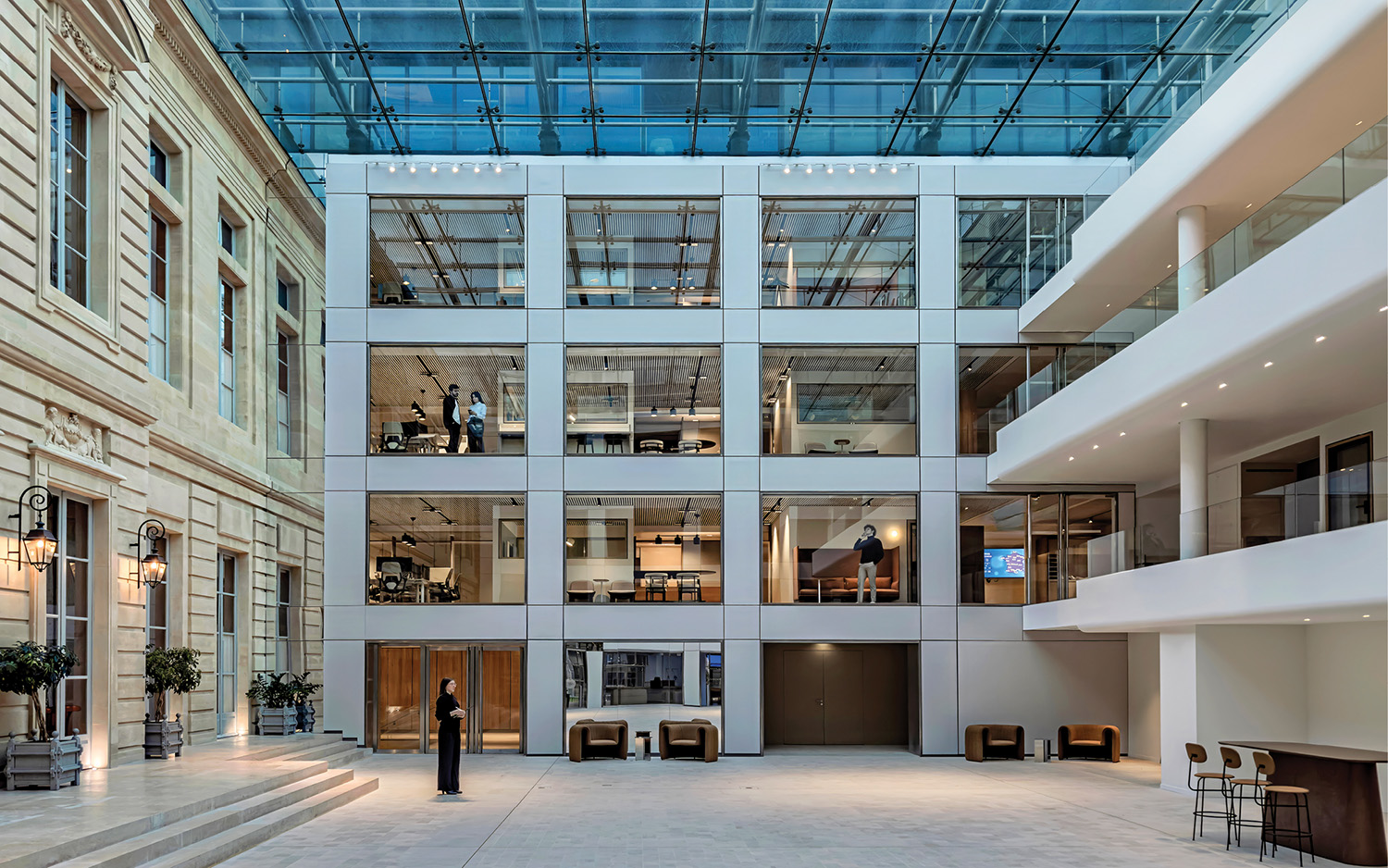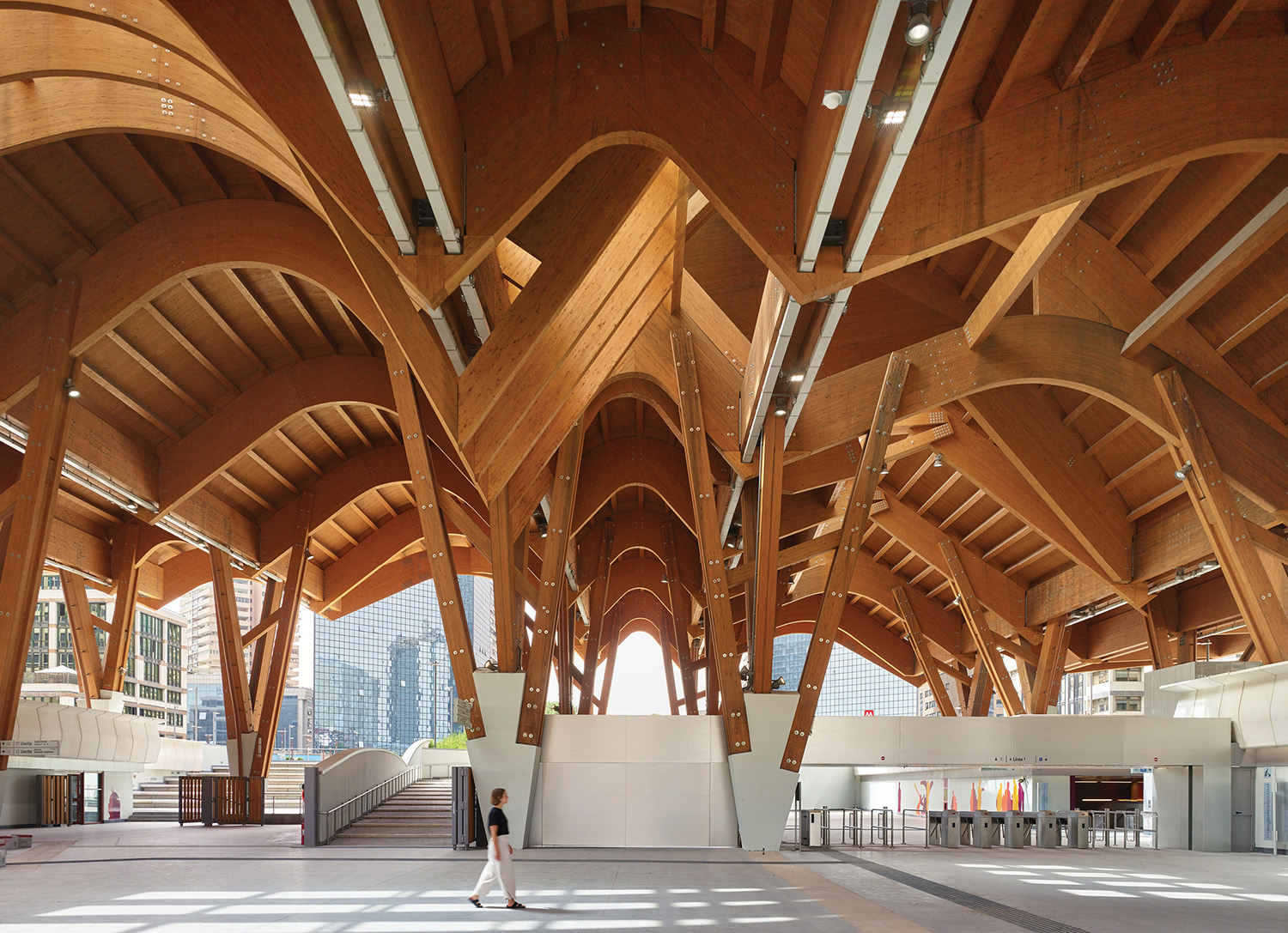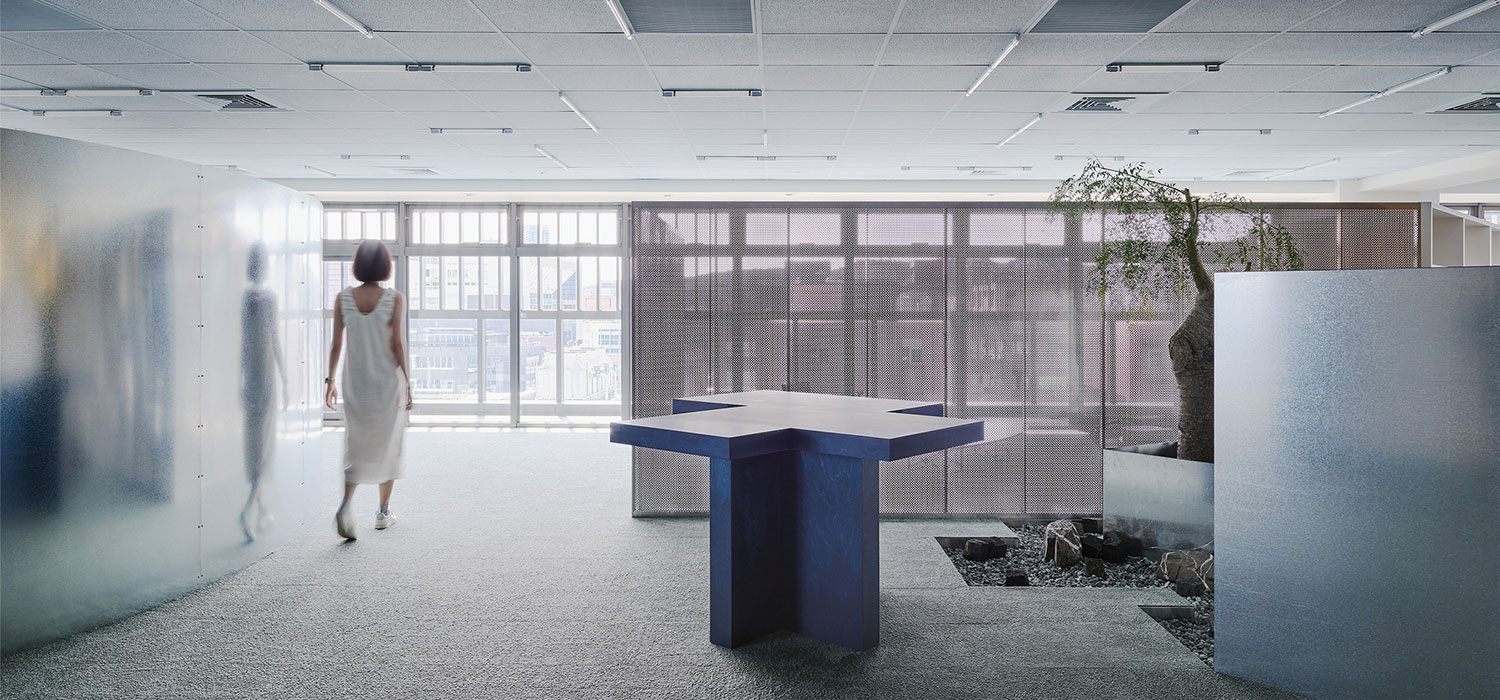Through the Looking Glass: The Eclaireur Boutique Gets A New Marais Home By Arne Quinze
Fashion retailer Armand Hadida’s description of the mix of avant-garde fashion, accessories, furniture, design objects, and antiques carried by the Eclaireur, his series of chic Parisian boutiques, is “well-ordered chaos.” He and his wife, Martine, launched their first shop in 1980, long before the term concept store was current. Locations have ranged from a windowless space, meant to be so exclusive that it’s invisible from the street, to one with decor inspired by Piero Fornasetti. For the latest shop, in a 17th-century building in the trendy Marais district, the couple turned to designer-artist Arne Quinze, a friend of long standing.
Quinze has perfected for his own version of ordered chaos. Sometimes monumental, his free-form abstract sculptures are constructed—in what looks like a haphazard fashion—with narrow slats of pine. His concept for the Eclaireur evolved from recent installations cobbled together with high-tech elements in what he calls a “shantytown” style. Once he worked out the basic concept, he turned the idea over to SAQ, the firm previously called Studio Arne Quinze. (Now a silent shareholder, he currently devotes all his time to his artwork.)
The 4,800-square-foot shop is as much an art installation as a retail outlet. Dominating the sales floor is a Quinze-style freestanding slatted form that looks a bit like a spindly three-legged dinosaur. SAQ project architect Roel Dehoorne describes it as an “interplay of images.” But that’s not all. Surrounding walls are covered with recycled wooden slats, 2 tons of them, nailed together with small panels, aluminum printing plates, cardboard scraps, and other bits. “Essentially, it’s an amalgam of trash,” Dehoorne says. But artfully arranged, composed on the spot, piece by piece, in exactly the same way Quinze’s sculptures grow gradually and organically.
Surfaces were then thickly coated with automotive paint in a silvery gold. The paint was allowed to form drips and bubbles, making the already irregular surface even more highly textured, while changing ambient light adjusts the effect. However, that’s only the beginning of the image interplay at work here. Lighting is a combination of natural and artificial, as modular LEDs supplement the sales floor’s skylit roof. Mirrors, scattered around, reflect the iridescent walls. At times, the entire space appears to be in motion.
Walls are punctuated by square and rectangular niches. Smaller ones, even those in the fitting rooms, are used to display accessories as well as exotic artifacts. (Niches holding jewelry have glass doors with locks.) The niches animate the walls, but they’re not alone in doing that. Interspersed with them, small video screens can be programmed to flash branding images—to support a perfume launch, for example, or just to create a mood.
Along the bottom of the walls, much larger niches hold hanging clothes. These niches are hidden behind electronically controlled panels that swing out and up, pulling the racks forward in the process. Salespeople open the closets for prospective buyers, making the wares a special surprise. “It’s like a game. It creates a relationship between the staff and the customer,” Dehoorne explains. Each closet is devoted to a single designer, style, or type of merchandise: Dries Van Noten, Comme des Garçons, leather-wear. Tall double doors, almost invisible on a sidewall, open to become a traditional couturier’s triptych mirror. And another set of hidden doors opens to reveal perhaps the biggest surprise, an audiovisual installation titled Echo & Narcisse.
Photography by Eric Laignel.
PROJECT TEAM
ISABELLE SPEYBROECK: SAQ. RDL ELECTRICITÉ: ELECTRICAL CONTRACTOR.
PRODUCT SOURCES
ZUMTOBEL LIGHTING: CEILING FIXTURES.
LUX LUMEN: RECESSED WALL FIXTURES.


